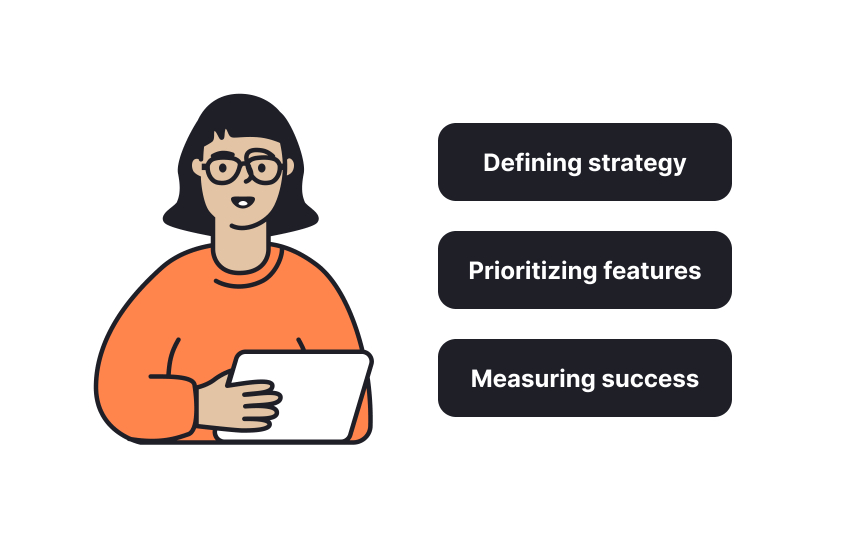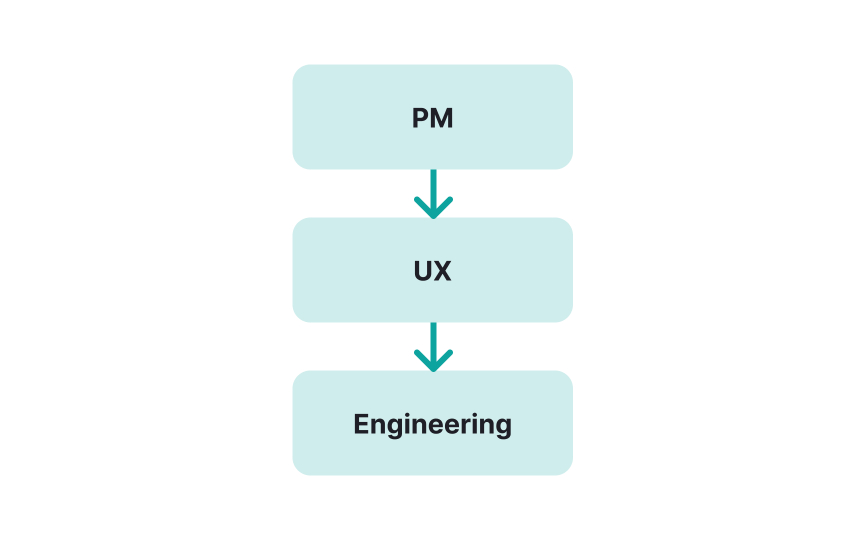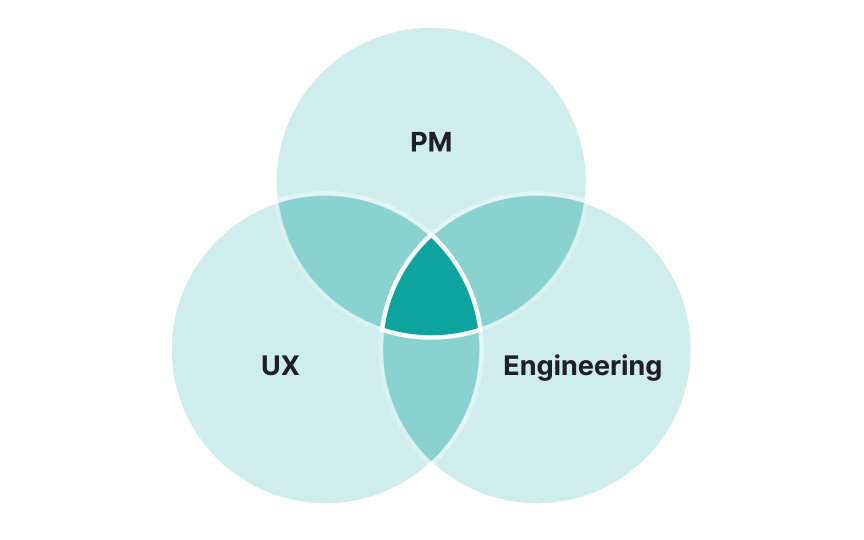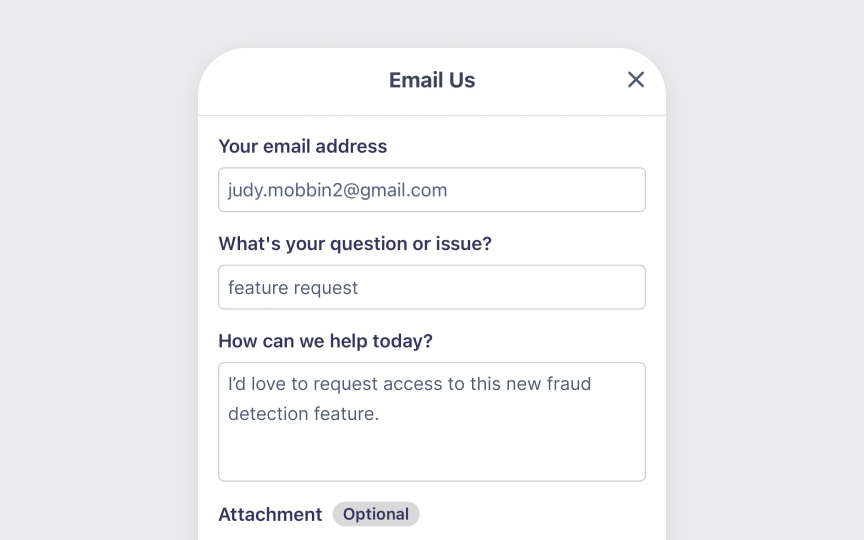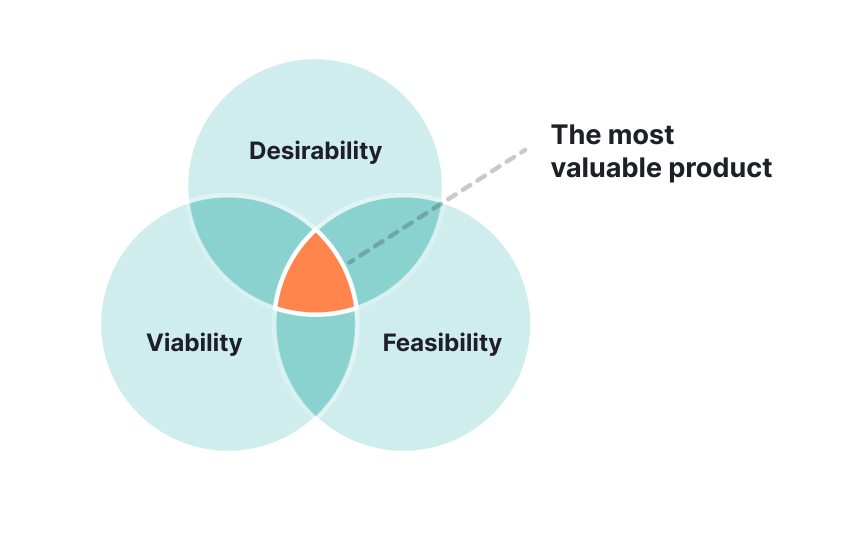What is Product Management?
Discover the foundations of product management and its crucial role in creating successful products.
Product management sits at the intersection of business, technology, and user experience, forming the backbone of successful digital and physical products. This multidisciplinary role has evolved from traditional brand management into a strategic function that drives product decisions across organizations. Product managers bridge the gap between what users need and what businesses can profitably provide, balancing stakeholder expectations, market opportunities, and technical constraints. Unlike UX designers who focus on user experience or engineers who build technical solutions, product managers take a holistic view that considers market fit, business viability, and long-term strategy.
The discipline requires both analytical thinking to make data-informed decisions and creative problem-solving to overcome complex challenges. From startups to enterprises, effective product management creates coherent products that solve real problems while delivering measurable business results.
Modern
Product managers serve as mini-CEOs for their product areas, owning outcomes rather than outputs. While they typically lack direct authority over engineering or design teams, they influence through vision, data, and persuasion. The role varies across organizations — startup PMs handle everything from market research to quality assurance, while enterprise PMs may instead focus on a more granular feature or part of the product development process.
Core responsibilities include:
- Defining product strategy
- Understand technical feasibility, restraints, and trade-offs
- Prioritizing features
- Coordinating cross-functional execution
- Measuring success
- Gathering market intelligence
- Identifying opportunities
- Translating customer problems into product solutions that deliver business value
This multifaceted role demands versatility. One day might involve customer interviews, another analyzing metrics, and another facilitating technical planning. Successful PMs understand user needs, communicate effectively, make data-informed decisions, and drive products toward market success.
Pro Tip: When making product decisions, explicitly consider all 3 perspectives: business viability (PM), user desirability (UX), and technical feasibility (Engineering).
While product managers and project managers both play crucial roles in bringing products to market, their focus and responsibilities differ significantly. Product managers are primarily responsible for the 'what' and 'why' of a product. They define the
Project managers, on the other hand, focus on the 'how' and 'when' of specific initiatives. They are responsible for planning, executing, and closing projects within defined scope, time, and budget constraints. While product managers prioritize features and define requirements, project managers create and manage the schedules, resources, and tasks needed to deliver those features. Product managers are measured on the success of the product in the market, while project managers are evaluated on their ability to deliver projects on time and within budget.[2]
Successful product managers balance visionary thinking with pragmatic execution — they spot opportunities while understanding real-world constraints. While users may suggest valid features, the true opportunity lies in understanding why they're requesting them: what pain point are they trying to solve?
Effective PMs act as "mini-CEOs" of their product areas, bringing vision while delivering value. The key traits of a product manager include:
- Customer empathy: Great PMs understand user needs beyond surface requests. They solve problems rather than just building features, prioritizing by value not feature lists.
- Communication skills: PMs must articulate complex ideas to diverse stakeholders, from engineers to executives.
- Leadership: Despite lacking direct authority, PMs influence through vision and persuasion. They adapt when data suggests a different approach.
Successful PMs expand their knowledge across technical, business, and user domains. They balance data-driven decisions with sound judgment, knowing when to trust metrics and when to rely on experience.
Product managers adopt a distinctive mindset that shapes how they approach challenges and opportunities. The product mindset includes several key principles:
- Outcomes over outputs: PMs focus on actual user and business impact rather than just shipping features. Success is measured by value delivered, not features completed.
- Evidence over opinion: Decisions are guided by data and
research rather than relying on the highest-paid person's preferences. - Problem-oriented thinking: PMs ask, "How does this solve a real user problem?" They dig into underlying issues before jumping to solutions.
- Balancing vision with execution: Each increment should move the product toward its ultimate destination while delivering immediate value.
- Learning from failure: The product mindset views failures as valuable learning opportunities rather than defeats, using experiments to reduce risk.
Pro Tip: Practice reframing feature requests as problem statements. Instead of "We need a dashboard," ask "What decisions are users trying to make, and what information do they need?”
Industry specialization distinguishes:
- Consumer packaged goods PMs focus on marketing, distribution, and
brand positioning. - Technology PMs concentrate on digital experiences and work closely with engineering.
Functional specialization distinguishes:
- Technical PMs have engineering backgrounds and often work on developer tools.
- Growth PMs focus on metrics like user acquisition, activation, and revenue.
- UX-oriented PMs specialize in
user experience and interface design decisions.
Business model distinguishes:
- B2B product management involves longer sales cycles and complex stakeholder needs.
- B2C product management has shorter cycles and direct consumer relationships.
- Platform PMs work on foundations that other products build upon.
Core principles of understanding user needs, defining value propositions, and delivering outcomes remain consistent across all PM types.[3]
The
Desirability (What users want):
- Focuses on solving real user problems in appealing ways
- Draws on user research, market trends, and competitive analysis
- Ensures products meet genuine needs that users actually care about
Feasibility (What can be built):
- Addresses technical constraints, resources, and implementation challenges
- Requires working closely with engineering teams
- Evaluates what's possible within current limitations
Viability (What makes business sense):
- Examines
revenue potential, costs, market size, and company strategy - Ensures the product can sustain business operations and growth
Products that excel in all 3 dimensions find the sweet spot for success. This framework helps teams avoid common pitfalls like building impressive products nobody wants or pursuing business opportunities that don't solve meaningful problems.
Manager, responsible for a broader area of the product experience and managing more junior PMs. With experience, opportunities emerge for Director or VP of Product positions, culminating in Chief Product Officer roles for those who excel. Each advancement brings greater strategic influence and leadership responsibility.
Many PMs choose to specialize rather than climb the ladder. Some focus on specific domains like fintech, healthcare, or B2B, becoming industry experts. Others develop expertise in particular product types such as mobile apps, enterprise software, or platforms. Functional specialization in areas like growth, monetization, or technical infrastructure provides another path.
Product management serves as an excellent springboard to broader opportunities. The cross-functional leadership experience prepares PMs well for general management roles. Many successful entrepreneurs and CEOs began as product managers, applying their experience balancing business viability with user needs to build new ventures.
References
- The history and evolution of product management | Mind the Product
- What Is Product Management? A Beginner’s Guide | The Product Manager
Top contributors
Topics
From Course
Share
Similar lessons

Continuous Discovery Mindset

Business Outcomes vs. Product Outcomes

